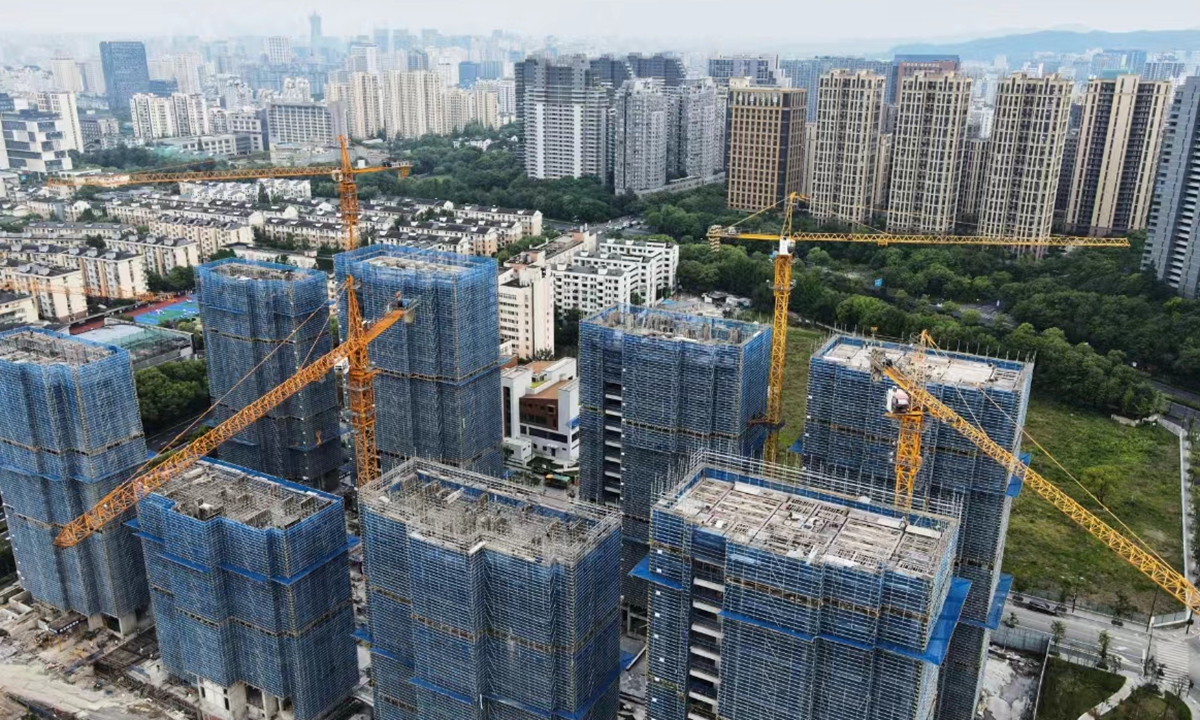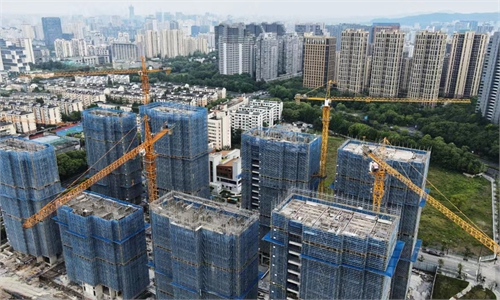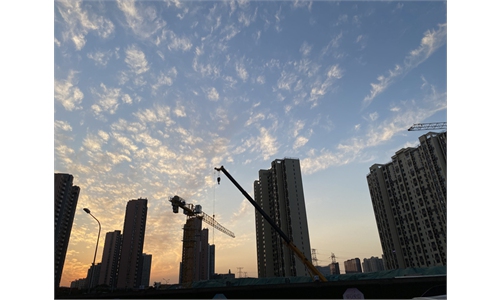
A view of a residential property project under construction in Hangzhou, East China's Zhejiang Province on May 9, 2024. The city announced the same day that it will lift all home purchase restrictions, making it among the first Chinese cities to completely abolish purchase restrictions amid a nationwide effort to shore up the real estate market. Photo: VCG
China's government-subsidized housing construction has gained momentum this year. By the end of June, 1.128 million units have been built, or completing 66.2 percent of the annual target, with investments totaling 118.3 billion yuan ($16.5 billion), Xinhua News Agency reported on Wednesday.
The progress came amid efforts by Chinese cities to strengthen policy support and advance related housing projects, in line with the central government's recent resolution to enhance the country's social security system, which includes scaling up construction and supply of government-subsidized apartments to improve residential well-being.
In Fuzhou, East China's Fujian Province, the city has recently introduced a dual application system for its first government-subsidized housing project based on the allotted purchase model, offering both online and offline options to streamline the application process for home-buyers.
As of the end of July, 362 out of the 701 housing units planned as part of the project had been successfully applied, thanks to its diverse application channels and flexible allocation principles, local authorities said.
Major Chinese cities such as Guangzhou, Shenzhen, Hangzhou, and Shanghai have also kicked off various government-subsidized housing projects.
As of July, Hangzhou has accumulated approximately 170,000 units of public rental housing, 264,600 units of government-subsidized rental housing, and 17,400 units of shared ownership housing. The city plans to commence construction of no fewer than 6,000 units of government-subsidized housing for sale in 2024.
In Shanghai, government-subsidized rental housing has also seen rapid progress, with around 47,000 new units constructed and 34,000 units supplied by mid-year, official data showed.
During the first half of the year, the Chinese government's work on affordable housing mainly focused on promoting major housing projects, managing existing inventory and optimizing market supply, Yan Yuejin, research director at Shanghai-based E-house China R&D Institute, told the Global Times on Wednesday.
"Recent high-level meetings in Beijing clarified the direction for future real estate development, such as ramping up affordable housing projects," Yan said.
China's Ministry of Housing and Urban-Rural Development plans to continue following up with the projects' execution and ensuring financial backing to speed up construction and meet annual targets.
Yan noted that the achievements in the first half laid a solid basis for advancing efforts in the second half. Ongoing improvements in housing market, particularly addressing the needs of first-time buyers, will help resolve housing issues for key group.
China is pushing to build a new real estate sector development model on the bedrock of the "three major projects" - involving affordable housing, advancing the construction of public infrastructure for both normal and emergency use, and the renovation of run-down neighborhoods in cities.
On July 31, China's State Council, the cabinet, pledged increased central fiscal support for affordable rental housing and urban infrastructure upgrades in a new five-year urbanization plan, as part of efforts to speed up urbanization and boost domestic demand.
Global Times



